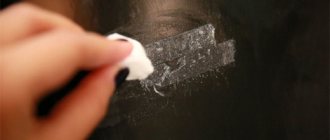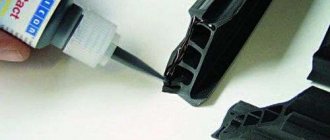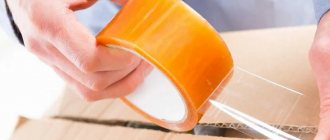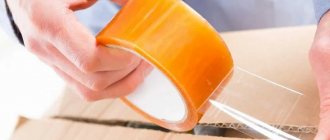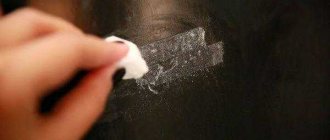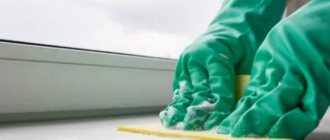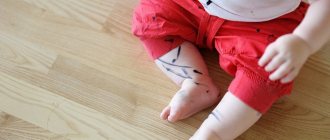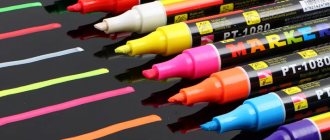Due to its universal qualities, plastic is the basis for the manufacture of many things, including children's toys and furniture. It is also used to make adhesive tape - a flexible tape on which an adhesive layer is applied. Sometimes they come into conflict. Scotch tape is used to stick something to a plastic surface or to glue things together. When the need for gluing passes, unpleasant sticky residues are left on the surfaces. Every housewife should know how to remove traces of tape on plastic: the information will certainly come in handy.
How to remove adhesive from tape from plastic: improvised means
Before starting work, first test the selected method in an inconspicuous area. To do this, apply the product for 5 minutes; if during this time the coating has not changed, you can continue the procedure.
Soap
Soap, especially laundry soap, is a folk remedy that has been used since ancient times to cleanse various contaminants. Surprisingly, it can even remove traces of tape.
Dilute a little detergent in water to obtain a solution of sufficient concentration. Now soak a piece of cloth or sponge in the product and wipe off any dirt left by the tape.
If the plastic item is small and can be dipped into water, it may be more convenient to leave it in soapy water for a while. This way, the stain will disappear on its own, and all that remains is to wipe the surface.
Alcohol
Alcohol is a universal and effective remedy. It not only does not damage the plastic surface, but also completely cleans it of dirt. The alcohol will help remove the adhesive from the surface and will bleach the plastic if it has yellowed.
Take cotton wool and moisten it with alcohol. Apply the product to the stain and rub thoroughly.
Vegetable oil
Traces of adhesive tape can be easily removed with vegetable oil, which, when mixed with glue, can change its properties. The oil is applied directly to the contaminated surface or a rag soaked in the product is applied to it. After 30-40 minutes, the mass loses its viscosity and is easily removed with a sponge.
After treatment, the surface of the plastic is washed with a soap solution. If you doubt that it will be difficult to remove the oil in the future, it is better not to use this method.
Eraser
You can easily get rid of fresh and old traces of tape using a regular eraser. They work on the same principle as erasing pencil marks on paper. At the end of the work, all that remains is to remove the specks. However, this method is very labor intensive for cleaning large areas covered with duct tape.
After removing the dirt, a trace of rubber may remain. Don't be alarmed if a new one appears in place of the old stain. It can be easily removed with a damp cloth, preferably made from natural fabrics that absorb moisture well.
Nail polish remover
Dampen a suitable cloth with nail polish remover and wipe away any remaining adhesive from the tape. Wait a few minutes and wipe well.
Nail polish remover may change color, so test in an inconspicuous area before using.
Table vinegar
How else can you remove tape marks? 6% or 9% vinegar will help. Dampen the cloth and wipe the dirty area. The smell will disappear after a while.
Soda
In addition to wiping off the film from the plastic, dry detergent powder will help solve the problem. If you don't have it at home, try using baking soda, it also works as a scrub.
To combat fresh marks on plastic, you can use regular baking soda. To prepare the substance as glue, add a small amount of water to it. Apply it to a dampened sponge and wipe off the dirt.
If you couldn’t deal with them the first time, the procedure should be repeated. Then wipe the surface with a damp cloth, and then with a dry one.
Scotch
It is easy to remove the sticky layer in a small area using the adhesive tape itself. It is glued to a new piece of tape and secured securely by hand, and then abruptly torn off. Actions are repeated as necessary.
Dishwashing gel
An easy way to clean plastic is to dilute dishwashing gel in hot water, lather well and wipe the desired surface with a sponge. Wipe dry with a napkin.
Hairdryer
Heat helps soften the glue and can be cleaned with any cleaning products. This electrical device is often used to remove double-sided tape, which, in addition to glue and rubber, also contains other materials that firmly adhere to plastic.
General tips and recommendations for work
Experts give simple tips to help clean adhesive tape from plastic:
It is easier to remove a fresh trace of tape. For this purpose, you can use non-aggressive means that are available at home.- Before using chemicals, you should test their reaction in an inconspicuous area.
- When using chemicals, it is important to protect your hands with gloves.
- Do not use chemicals frequently. Otherwise, the surface will lose its original color.
- To wash stains with detergents, it is better to choose formulations with citrus ingredients. They improve the destruction of the adhesive base.
- You can use an old plastic card to scrape off glue marks.
Methods for removing tape from glass
After installing the plastic windows, they are secured and protected with adhesive tape. However, after installation new problems arise when you need to remove the miracle film from the glass.
Hot soapy water
Dilute liquid dish detergent in hot water. Wipe dirty areas on the glass. Then rinse with clean water and wipe dry with a dry cloth or paper.
Vegetable oil
Pour some oil onto a sponge or cloth. Apply it to the stain and leave it on for a while. This will take 15-20 minutes.
The oil works as follows. Under its influence, the glue becomes saturated and increases in volume, thereby leaving the surface. After some time, simply wipe off any remaining dirt with another cloth or paper towel. The oil is easily washed off with ordinary laundry soap.
Kerosene, white spirit, gasoline
Are you wondering how to remove tape from glass? White spirit or purified gasoline, which is used to refill lighters, effectively removes the effects of adhesive tape. Wipe problem areas with a rag soaked in the solution, then rinse with soapy water and wipe.
Ethyl alcohol and alcohol-containing solutions
You can also use alcohol to remove traces of adhesive tape. However, do not use this method on hardwood floors, otherwise the varnish will be removed. A combination of alcohol and rubbing will remove almost everything.
- First you need to remove as much of the tape as possible by simply scraping it off with your fingernail or an old bank card.
- Fill a small bowl with alcohol and dip the tip of a rag into it.
- Use the tip of the napkin to wipe away any excess adhesive tape from side to side in a circular motion.
- Moisten again with alcohol when it dries. Continue rubbing until the tape comes off or you can remove it without any problems.
- Wipe the surface with a cloth dampened with soapy water and dry with a towel.
Ethyl, ammonia or methyl alcohol, as well as alcohol-containing compounds will work effectively in removing tape residues from wood.
Ammonia
Solvent or ammonia is considered an effective way to remove adhesive residue. Despite its simplicity, the procedure is accompanied by a not very pleasant smell. Wearing protective gloves, soak a sponge in the product and wipe away dirt, then rinse with water.
Most often, this method is used to clean plastic windows, not only frames, but also glass. Even special glass cleaners are made using alcohol.
Eraser
A regular office supply eraser can remove traces of glue, and the residue can be wiped off the glass surface with a damp, soft cloth. However, if the surface is very large, you will need a lot of time and patience.
Nail polish remover
Moisten a cotton pad or napkin with nail polish remover and wipe the problem surface well. There will be no trace left of the tape.
Stationery knife
You can also clean the glue tracks with a utility knife. Remove any clumps from the glass and then wipe them off with a damp cloth. Be careful not to scratch the glass surface.
Remove tape with tape
Cut the tape to the desired length. Apply masking tape over the desired area. Press along the entire length. Then, with a sharp movement, tear off the tape. Repeat if necessary.
Glass cleaner
Windshield wipers can remove adhesive tape from glass surfaces. Apply the spray to the adhesive track and wipe it off with a sponge after a while. Then rinse the glass surface with water and wipe with a special cloth or soft paper.
Use of oils
Don’t even doubt that it is the oil, be it sunflower, flaxseed, rapeseed or any other, that will help you remove the problem in a few simple steps.
To clean the surface, use the soft side of the sponge rather than rough cloth, as the plastic can be scratched very easily.
- Apply the product of your choice with a sponge or any other convenient way to the surface with glue and leave it for 10 - 15 minutes. Thanks to the oily substance, the glue becomes saturated and swells, losing its properties.
- Next you need to remove the resulting mass with a napkin.
- After this, you need to thoroughly clean the surface with a soap solution, which will remove any remaining grease stains.
Please note that a specific aroma may remain in the room for some time, so one of the best options is to use citrus essential oil, which can be found at a pharmacy or specialty store.
How to remove double-sided tape
Double-sided tape forms a strong connection on all types of surfaces. Commonly used for attaching car accessories, hanging photos, making craft projects and forms a nearly permanent bond. The tape is difficult to remove and often leaves behind a sticky residue. However, with a little determination and the right technique, it can be cleanly removed from most surfaces.
Stationery eraser
A school eraser will cope not only with dried traces of glue from adhesive tape, but also with a glue track from double-sided tape. This method is especially convenient for small stains and those that are in an inconvenient place.
Simply rub the area from the tape and you will see how the glue particles will roll into dirty balls. They can be easily removed with a damp cloth.
Heating
Turn on the hair dryer and point it at the double-sided tape. Hold for as long as possible, at least three minutes. Especially warm the edges of the tape - these are the places where the tape sticks the most.
Turn off the hair dryer, pry the edge with a knife, flat plate or fingernail. The adhesive tape should rise halfway. You can gently peel it off or heat it so it comes off on its own.
Vegetable oil
The most gentle way. You will need vegetable oil and a regular dish sponge. Pour oil onto the remaining tape and leave for 20-30 minutes. The glue will soften during this time. Use a dish sponge to scrub away stains.
How to remove tape from metal
Metal products are subject to slight deformation, so almost all options are suitable for removing the sticky layer: from soap and oil solutions to aggressive substances and hot air treatment. The metal is not afraid of mechanical cleaning by scraping. Substances with abrasive particles help this well. Often the sticker is removed from the metal coating without leaving any residue.
Freezing
If the item you want to remove tape residue from is small, place it in the freezer for 30 to 60 minutes and then scrape it off. If this option is not suitable, you can “freeze” the adhesive layer using a piece of ice or coolers that are used for thermal bags. Just press the ice against the glue for a few minutes and then try to peel it off. Several approaches may be required.
Basic rules
What not to do in the fight against adhesive traces:
- use finely dispersed materials: they themselves will stick to the marks and interfere with their removal;
- use metal scrapers: the plastic will be scratched;
- overdo it with solvents: the plastic will dissolve along with the glue.
Remember: the fresher the sticky mark, the easier it is to remove.
Important! Abrasive powders, hard brushes, and corrosive chemicals are contraindicated for plastic.
Removing tape from furniture
Although tape offers a quick solution to adhesion problems, it often sticks more securely than desired. Especially if you leave the tape glued for a long time. There are often problems when trying to remove tape adhesive from upholstery and wood surfaces, but a number of products can make removal easier. There are three ways to clean furniture using improvised means.
Sunflower oil
When attempting to remove tape from finished wood products, you must not damage the finish.
Therefore, you should not use strong solvents such as lacquer thinner or even acetone.
Products designed to remove dried latex paint are usually safe, but you may have better luck if you wipe off the tape with a household oil such as olive, lemon, or mineral oil.
To moisturize dried tape residue, spread vegetable oil on it and leave for 30 minutes. After this, wipe the area with a damp cloth.
Heating
The first step to effectively removing tape residue is to use heat, which softens the adhesive and makes it easier to remove. Therefore, sometimes it is enough to heat the problem area and carefully remove the softened paste with a plastic spatula, an old bank card, etc.
This method is good, but is not applicable to surfaces for which heating is contraindicated.
The procedure is very simple; you will need a regular household hair dryer.
- Keep the device on medium power a few centimeters from the surface of the wood.
- Run the hairdryer back and forth over the remaining tape several times.
- After a few minutes, when the adhesive from the tape becomes soft, try scraping it off.
- If tape residue does not come off and is stickier than before, set the temperature to a higher temperature.
- At the same time, use a plastic putty knife to start scraping from the ends until the adhesive tape is completely peeled off the furniture.
- Once the adhesive tape is loose enough to handle, you can put the putty knife down and gently pull, always keeping a hair dryer handy.
- Apply soapy water using a very soft microfiber cloth and use it to remove any remaining adhesive.
School eraser
You can remove pieces of glue from varnished wooden furniture with a regular eraser. Use the less hard side to avoid damaging the surface. The instructions are extremely simple, rub with a little effort on the sticky part and the adhesive from the tape will roll off along with the eraser pieces.
How to remove tape from linoleum
Adhesive tape is difficult to remove from many surfaces. It is especially difficult to remove from linoleum. The adhesive usually remains even after the tape or label is removed. Sticky dirt is often a problem. We'll tell you three effective ways to save your nerves and remove the adhesive layer.
Friction with an eraser and a dry, hard cloth
As mentioned earlier, you can use a regular office eraser. Just rub on the sticky part and you will see the adhesive layer come off.
If you don't have school supplies on hand, replace them with a regular hard rag. Work on the same principle as with an eraser.
Vodka, alcohol and gasoline
If you're hoping to completely remove duct tape from a non-porous surface, try using rubbing alcohol. This solvent is not suitable for most painted materials, so it should always be tested first, even on metal and glass.
Run a rag soaked in isopropyl over a small area to make sure it doesn't cause unsightly results.
If the test is successful, continue to cover the stains with alcohol, working in small sections and allowing the liquid to evaporate until you can easily wipe away any remaining residue.
Medical alcohol can be replaced with vodka. However, this method may be less effective. The same cannot be said about gasoline or kerosene.
Just apply a small amount of product to the glue marks and then start scrubbing it off.
Kerosene and gasoline do not harm the surfaces being cleaned, but may leave streaks and stains. Test in a small area first.
Melamine sponge
Another effective way to get rid of tape: a melamine sponge. This is a high-quality and inexpensive analogue of a foam sponge. But the composition includes so-called melamine foam. It is produced using a special melamine resin swelling technology.
Melamine itself is colorless crystals, poorly soluble in water. Although the sponge is an abrasive product, it can be used when cleaning glass because its soft texture will not scratch the surface or leave marks.
The melamine sponge should be moistened, squeezed until damp and the contaminated surface should be wiped well.
How to remove marks from masking tape
Once the masking tape dries, the hardened adhesive can be quite difficult to remove. You can scrape or sand, but this may accidentally damage the surface that the tape was originally intended to protect.
Luckily, there are many methods for safely removing dried masking tape, and they all work to varying degrees—if one method doesn't work, just try another.
- Start with the gentlest method - warm water and a damp cloth. Wet the cloth and wipe it over the dry tape. Let the water soak in for a few minutes, then carefully peel off the tape. Re-wetting the surface will help soften the adhesive and loosen the paper tape. You may need a razor blade to remove any remaining adhesive.
- Turn on the hair dryer and direct a stream of hot air at the old tape from a distance of about 10 cm. The warm air should soften the glue within a couple of minutes and allow the tape to be carefully peeled off. Monitor this process carefully to ensure that the heat does not damage the surface under and around the masking tape.
- Use commercial solutions such as wood cleaning soap, spray lubricants (such as WD-40), and commercial hand cleaning cream to moisten and revitalize the adhesive on the tape and make the tape easier to peel off. Here again you may need a razor blade to remove any remaining small pieces of paper and glue.
- Using chemical solvents such as mineral spirits or lacquer thinner can help soften the adhesive surface of the tape so you can simply wipe off the residue.
How to Remove Old Tape Marks
Scotch tape is like manna from heaven when you need to attach one thing to another, but trying to remove any remaining tape can be a real pain.
Removing tape residue can be easy or difficult depending on a number of factors, such as how long the tape has been in use and the type of surface it was applied to, but there are several remedies that can help deal with the problem.
Hair dryer in combination with other products
There are adhesive tapes that are insensitive to grease, water and household detergents. Residues can be removed using heat. They are heated with a household hairdryer and scraped off with a plastic spatula. You can also use a hair dryer, but then there is a risk that very hot air will melt or burn the surface.
You can also use an iron and heat the tape through the thick fabric. If these measures do not help and you cannot remove the tape, you must resort to chemical means. Add to the operation of the hair dryer the interaction of aggressive substances, such as:
- solvents,
- paraffin,
- turpentine,
- terpinol.
Before using them, test on a small area to ensure they do not damage the substrate.
Solvents are especially dangerous for plastics and coatings. They may melt or tarnish. They can also ruin the appearance of metal surfaces.
Remember to wear protective gloves, a mask and goggles when using chemicals to remove stuck tape, as they can cause irritation.
Unusual use of improvised solvents
Acetone can also be used to remove tape residue from wood. However, before using the solvent, it must be tested in an inconspicuous place.
- Dip a cotton swab in acetone.
- Rub the tape with a cotton swab until it is saturated with acetone.
- Leave for a few minutes.
- Wipe any remaining duct tape off the wood with a damp cloth. Repeat the process if the tape is still attached to the wood.
- Wipe the wood with a damp cloth and soapy water and dry with a towel. Don't let the acetone spend too much time on the wood, as it can damage the finish.
In some cases, you can also use white spirit. However, we recommend that you test on a hidden piece to ensure that the product will not discolour the surface.
Vegetable oil as an effective remedy for tape marks
Vegetable oil reduces the adhesion of the adhesive base of the tape to the surface. This is one of the gentlest, residue-free methods for removing tape without the use of harsh chemicals. This method is suitable for most types of wood.
Olive oil can only be used on surfaces that will not deteriorate or become soaked, so only on smooth wooden surfaces, not on delicate kitchen countertops or wooden furniture.
Steps to remove duct tape residue using vegetable oil:
- Pour vegetable oil onto a paper towel and spread it over the remaining tape.
- Leave to absorb for 30-40 minutes.
- Scrape or scrape away any remaining duct tape from the wood to remove as much of it as possible.
- Remove excess tape by lightly rubbing with a cotton pad.
- Wipe off remaining tape with a cloth soaked in soapy water.
- Wipe off the oil from the wood with a dry cloth.
There are other products that also work like baby oil, vegetable oil and mayonnaise. Be careful with absorbent materials such as carpets and clothing because the oil may stain.
Vinegar as an effective remedy for adhesive residue from tape
You can use mild acids such as white vinegar. They help a lot if the tape has been glued for a long time.
Make a compress using a soft cloth soaked in a solution of white vinegar and water and leave for a couple of seconds. Next, remove the softened tape, wash away any traces of vinegar and polish the surface with a clean, fresh cloth.
What not to use
The glass surface is fragile, so you should not choose products that could damage its integrity. These include:
- Abrasive powders;
- Dry type of soda;
- Tools with metal bristles;
- Hard sponges;
- Alkaline and non-food acidic substances;
- The matte surface cannot be cleaned with acetone;
- Sandpaper.
The glass surface is fragile, so you should not choose products that could damage its integrity.


